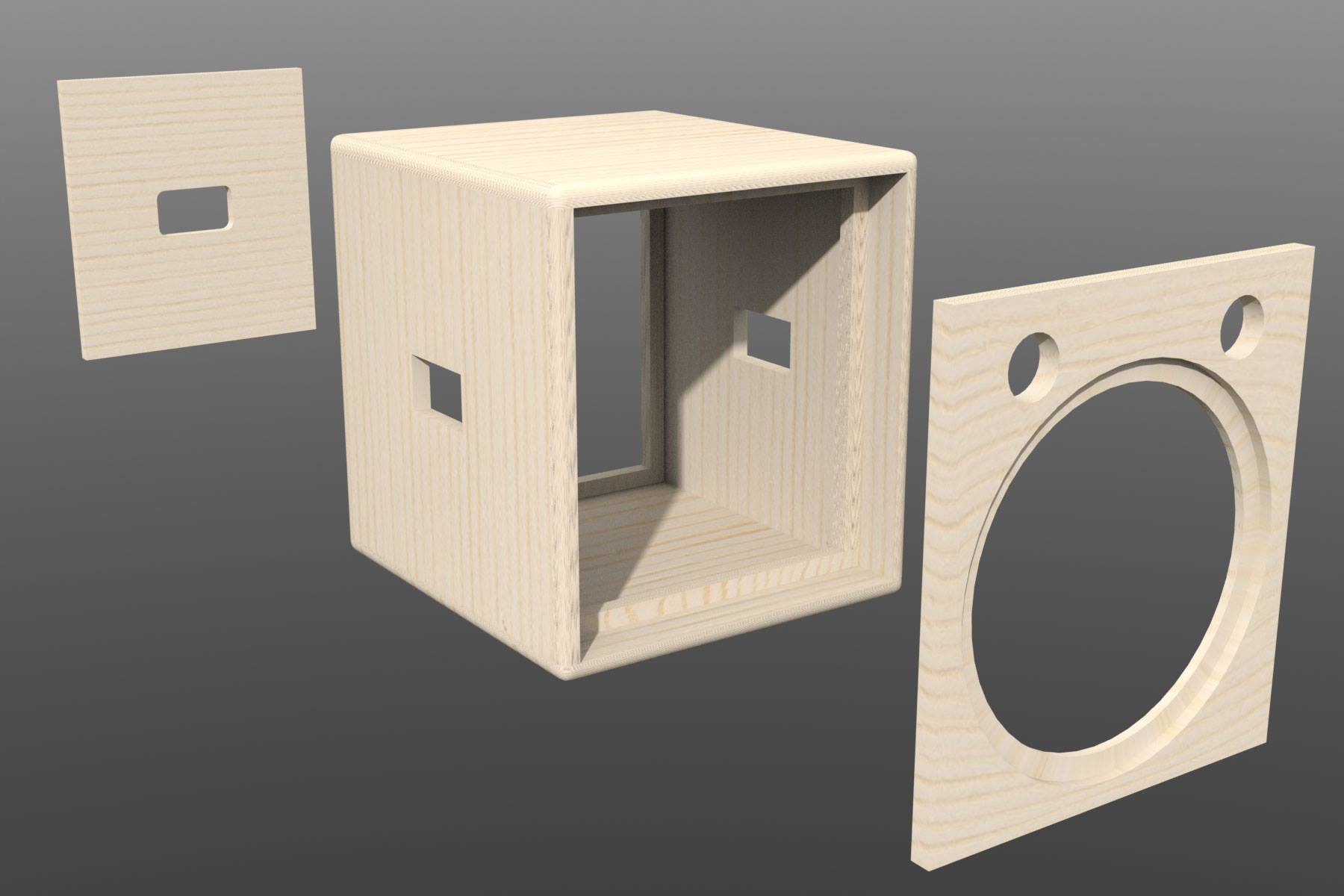Bass Speaker Cabinets
Once you get known for building things, people start to donate parts and components that they think you can make good use of. And having been given two 150 watt 12 inch bass speakers I could certainly make good use of these. I initially enquired with The Amp Shop to have them construct the cabinets for these speakers. However their recommended speaker cabinet builder had no experience with bass reflex systems and did not want to be responsible for calculating the bass frequency response for the cabinets. Beyond their builder, The Amp Shop drew a blank for an alternative option. So I decided to look into it myself.
It didn't take me long to discover that there are some suitable iOS apps that can perform the rather complex equations for calculating the bass frequency response. These calculations take into account the dynamic qualities of the particular speakers and the cubic volume of the cabinet enclosure. The apps that I found were good for calculating the dimensions of a single bass reflex port. Due to wanting to keep the cabinets as small and compact as possible I wanted to have smaller dual ports. A Google search came up with some websites that offered similar calculators, one of which could calculate for dual ports. Between the apps and the website I could calculate everything I needed.
As fate would have it, a visitor looking to purchase one of my guitars was also a local cabinet maker with some speaker cabinet experience. He was quickly engaged to build the cabinets. Using Auto Des Sys Form Z as my preferred CAD application, I modeled the front speaker baffle and had this CNC routed by one of my workplace suppliers for a box of beer. I completed the cabinet project by covering them in tolex and assembling and wiring the speakers into place.
The end result is a wonderful sounding bass amplifier stack now being used in my band "The Lost Chords". The bass frequency response calculations paid off and the sound quality is equal to any commercial bass instrument amplifier. I am using a micro TC Electronics head as the amplifier and by separating the speakers out into two cabinets I have the flexibility of using one or both speakers. This is also affords a bass rig that is easier to lug around than a single larger cabinet holding two speakers.






